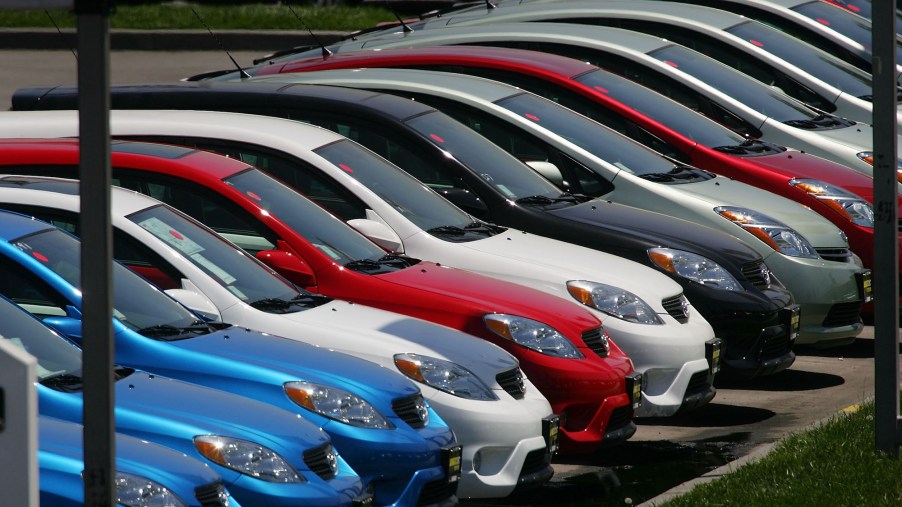
What Car Colors Get Dirty the Fastest?
When car shopping, many consumers decide which color to get based on the one they like the most. But a car’s hue could affect more than just its style. For instance, there’s the belief that red cars attract police attention. But there are also practical reasons for choosing certain shades. In fact, some colors get dirty faster than others. Of these, black gets dirty the fastest, but there are other car colors that are hard to keep clean as well.
Which car color should you choose?
Anyone who has ever shopped for a vehicle knows there’s a vast array of car colors. Consumers can go with a basic, traditional hue, like black or white, or something more eye-catching, like candy apple red. For a more unique look, there are several new cars offering green, orange, and even purple colors. Each of these has their own appeal, but some colors have downsides that you may not consider.
The most popular car colors
Kelley Blue Book lists some of the most popular car colors for 2021. The publication says Pantone’s top two car colors this year are ultimate gray and illuminating, a sunny yellow hue. PPG automotive finishes hasn’t released its 2021 list yet, but its roundup of the most popular car colors in North America for 2020 is available. And the top four account for 86 percent of all vehicles. The list is as follows:
- White, 26 percent
- Black and gray, 19 percent each
- Silver, 12 percent
- Blue, 10 percent
- Red, 9 percent
- Natural, 2.5 percent
- Green, 2.5 percent
- Other, 0.5 percent
That ranking is for all vehicle classes, but there isn’t much variation among vehicle segments. White tops the list for SUVs, minivans, pickup trucks, and sedans, while white metallic is number one for luxury cars.
The best and worst colors for hiding scratches, dents and dirt
It makes sense that you’d want your new car to look good for as long as possible. However, that’s not easy to do when driving a car on dirty or wet roads. Parking in public places such as lots and garages also leaves vehicles vulnerable to dents and scratches from other drivers’ cars and shopping carts. But a car’s color could affect how such minor imperfections show up.
White is the best color for hiding dents and scratches, Kirmac reports. The bright color helps minimize the appearance of the flaws, especially on bright days with the sun out. Other light colors, such as silver and gray, are also good if you want to try to conceal surface scratches and dirt.
Lighter colors help scratches blend in with the paint, so they aren’t as noticeable as they would be on some other colors. On the flip side, black, dark blue, and dark grey cars get dirty the fastest. These colors essentially maximze the appearance of scratches, especially in sunlight.
Can car color affect resale value?
In addition to cleanliness, certain car colors affect your car’s resale value as well. So if you want to get as much money for your trade, choosing a neutral hue is better. Not only is white the best car color for hiding dirt and scratches, but it offers the best resale value as well. Black and gray are high on the list, too. But bright colors like red and yellow tend to attract fewer buyers, diminishing their resale potential.



